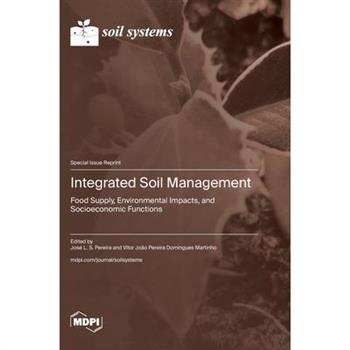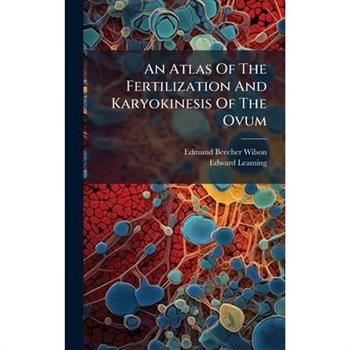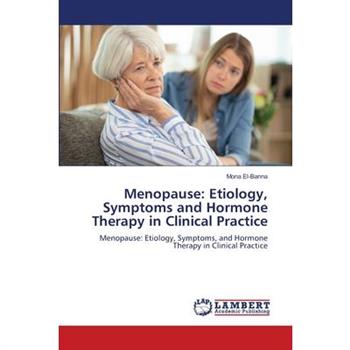Chromosomal and Genomic Structures and Functions
This new two-volume set presents the classical and advanced aspects of chromosomal and genomic structures and functions with special reference to chromosomes and cell division, providing a comprehensive resource for beginners, experts, and those venturing into the fascinating science of chromosomes and cell division.Volume 2 explores the future of genetic engineering and discusses epigenetics, the role of the nucleus, inheritance and its biological mechanisms, cytoplasmic inheritance, DNA as a genetic material, nuclear membranes, gene expression in prokaryotes, gene expression in eukaryotes, and genetics and evolution.Volume 1: Chromosomes and Cell Divisions discusses biotechnology and its applications, the chromosomal theory of inheritance, the chromosome itself, the types of cell division (mitosis and meiosis), structural changes in chromosomes, genes and cell division, sex determination, chromosome and mutations, and chromosomal movements during cell division.Providing up-to-date information and recent developments in genetics research, these two volumes will be a valuable resource for undergraduate and postgraduate students as well as faculty and researchers in cell biology, genetics, molecular genetics, evolution, biochemistry, biotechnology, botany, zoology, agriculture, and horticultural science.
Chromosomal and Genomic Structures and Functions
This new two-volume set presents the classical and advanced aspects of chromosomal and genomic structures and functions with special reference to chromosomes and cell division, providing a comprehensive resource for beginners, experts, and those venturing into the fascinating science of chromosomes and cell division.Volume 1 presents in-depth studies of the relationships and functional mechanisms of chromosomes, genes, and biological mechanisms to the benefit of organisms at large and in humans in particular. Understanding these biological concepts of chromosomal and genomic structures and functions has had a profound effect on society, leading to better health through improved inheritance patterns, accurate disease diagnosis, a better understanding of human gene variations, improved drug and pharmaceutical production, more sensitive and specific crime scene forensics, and increased production of different varieties of improved agronomic traits, which have revolutionized crop science, medical sciences, and advanced diagnostic developments.Volume 2: Genetic Material Structure and Functions explores the future of genetic engineering and discusses epigenetics, the role of the nucleus, inheritance and its biological mechanisms, cytoplasmic inheritance, DNA as a genetic material, nuclear membranes, gene expression in prokaryotes, gene expression in eukaryotes, and genetics and evolution.
Elephant Mountain
Elephant Mountain is the gripping tale of Debbie Ethell, a young woman whose fascination with an elephant skull in a bone museum leads her down an unexpected path. What begins as a curiosity about the tragic love story of Morgan Berry, the man who gave us Packy (the first baby elephant born in a U.S. zoo in forty-four years), and Eloise Berchtold, one of the world's greatest animal trainers, soon becomes a chilling mystery. The couple, each killed by separate elephants they raised, left behind a legacy tangled in secrets, cover-ups, and unanswered questions.As former owners of a secluded elephant farm in the rugged Pacific Northwest, Morgan and Eloise's lives and deaths hold the key to a truth long buried beneath layers of deception. Determined to uncover what really happened, Debbie draws on her experience as a conservation research scientist and the steadfast support of her best friend, who is facing a life-threatening illness. While navigating the shadows of her own past, including her ongoing recovery from alcoholism, Debbie finds courage and insight from a herd of wild elephants in Kenya, a group she has studied since childhood. Their stories of survival and loss mirror her own as she delves deeper into a mystery that will test her resolve and redefine her future.
Plant-Insect Interactions
Within the evolving field of plant-insect interactions, pest management and plant pollination receive a lot of attention because of their implications in crop yield. Host-plant resistance and biological control are important parts aspects of pest management that can bring alternatives to the problems that can arise with insecticide use. This Special Issue presents a collection of papers on the interactions of insects and mites with plants, while highlighting the importance of pest management and pollination.
Artificial Intelligence in the Production of Biotherapeutics
The transformative role of artificial intelligence (AI) in modern biomanufacturing, focusing on key areas such as Process Analytical Technology (PAT), Good Manufacturing Practice (GMP) compliance, predictive analytics, and AI-driven quality systems.
Zinc in Health and Disease Conditions
Zinc, the second most prevalent trace element in the human body, is crucial for numerous physiological processes. It acts as a signaling molecule, modulating cellular pathways, gene expression, and enzyme activity. Zinc plays a vital role in immune function, wound healing, DNA synthesis, and antioxidant defense. In the brain, it regulates neuronal excitation and inhibition by modulating receptors like the glutamate receptor, which is essential for cognitive and motor function. However, zinc's role is complex, as both deficiency and excess can lead to pathological conditions. In neurological disorders, for example, zinc dysregulation contributes to seizures by disrupting the balance between excitatory and inhibitory neurotransmission. Excessive intracellular zinc can lead to neurotoxicity, mitochondrial dysfunction, and cell death, while low zinc levels impair immune responses and promote inflammation. In cancer, metabolic diseases, and neurodegenerative conditions, altered zinc homeostasis can exacerbate disease progression. Thus, zinc's physiological functions are intricately tied to health and disease. Its dual nature-as both protective and potentially harmful-makes it a critical target for research looking to develop therapeutic strategies aimed at restoring the zinc balance in various pathological conditions. Understanding the fine regulation of zinc is key to harnessing its potential for disease prevention and treatment.
Genetics and Molecular Breeding of Fruit Tree Species
The global demand for horticultural crops with improved agricultural traits-such as enhanced fruit quality, higher yields, and increased resistance to biotic and abiotic stresses-is steadily rising. In this context, gaining a comprehensive understanding of the genetic basis underlying key agronomic traits is essential. However, genetic research and traditional breeding in fruit trees face significant challenges, including long juvenile phases, large plant sizes, and high levels of heterozygosity. Recent advancements in biotechnology and the emergence of genomics have opened up new avenues to overcome these limitations in conventional fruit tree breeding. The development of high-throughput genetic platforms, the availability of whole genome sequences, and the application of multi-omics approaches, along with genome-wide association studies (GWAS), have substantially advanced our understanding of the genetic architecture of traits of agronomic importance. In recent decades, biotechnological tools -such as molecular-based characterization, marker-assisted selection, and innovative breeding techniques including cisgenesis and genome editing- associated with the availability of efficient plant regeneration protocols are accelerating both the functional characterization of traits and the overall breeding process in fruit trees. This Reprint is part of the Special Issue "Genetics and Molecular Breeding of Fruit Tree Species", which aims to showcase the latest research and developments in the genetic and molecular breeding of fruit trees, focusing on the selection and creation of new genotypes with enhanced traits.
Nutrition and Gene Interaction
Over the past 15 years, nutrigenomics has established the relationship between genes, nutrition, and disease. This exciting research area shows that nutrition is not just about preventing deficiencies; it can also prevent and treat chronic illnesses like diabetes, cancer, and neurodegenerative disorders. By identifying how nutrients modulate cellular signaling pathways, diet can be used as a first line of defense against these chronic illnesses. This research helps inform dietary recommendations at the individual level and guide public dietary guidelines to reduce the prevalence of chronic illness.This Special Issue compiles recent research on how nutrients impact genetic expression, using methods like transcriptomics, proteomics, and metabolomics. It presents nine studies exploring gene-diet interactions across various health outcomes, highlighting the promise and complexity of nutrigenomics. The key findings presented include the role of fermented foods in reducing the risk of non-alcoholic fatty liver disease, the influence of genetics on dietary needs and bone health, and the impact of early-life nutrition on long-term gene expression. The Special Issue also addresses the genetic regulation of liver, cardiovascular, and thyroid diseases, and the potential for personalized nutrition interventions to reduce disease risk.Overall, this reprint advocates for precision nutrition, leveraging genetic and epigenetic insights to create personalized dietary strategies for better health outcomes.
Biosorbents
This book focuses on the biologically derived adsorbent with numerous applications in wastewater treatment, metal recovery, biosensor development, and so forth. It initiates with the description of biological sources of biosorbents followed by applications of biosorbents, biosorption isotherms, assessment of biosorbents with various tools, pretreatment of biosorbents, and its mode of action. Some less explored areas like separation of radionuclides, biosorption of volatile organic compounds, and animal-based biosorbents are also explained.Features: Focuses on fundamentals, characteristics of flora and fauna-mediated biosorbents used extensively Describes entire aspects of tools and techniques related to assessment and monitoring of biosorbents Includes adsorption kinetics, adsorption isotherm, and mechanism of action of biosorbents Covers advancements in pretreatment methods to enhance the adsorption process of biosorbents Reviews recent applications which include heavy metal removal, dye remediation, and separation of radionuclides and nano-biosorbents This book is aimed at graduate students and researchers in bioprocess engineering, microbiology, and biotechnology.
Dysbiosis of the Evolved Intestinal Microbiome
While it is clearly recognised that many non-communicable disorders are related to a disturbed microbiome (commonly called dysbiosis, a shortened term for microbiome failure: dysmicrobiosis), there is an absence of widely accepted underlying theories. The aim of this book is to show that all such disorders, be they weight gain, immune system disturbance, or poor mental health, stem from a single underlying problem: the failure to transfer key intestinal microbes from the mother to the new-born during birth. Furthermore, in contrast to the normal, exclusively bacterial approach, the book describes what might be called a "second generation" approach to the microbiome, that emphasises beneficial microeukaryotes acting to coordinate diverse bacterial functionality. Most importantly, lessons have been drawn to guide future research, the aim being to reintroduce these key microbes at the time of birth, alongside breast milk (bank milk if necessary) and before the immune system of the infant is fully established. If all goes as expected, not only can the present "triple plagues" of non-communicable disease be ameliorated more efficiently, but it should also be possible to banish such disease from future populations. Unfortunately, however, beneficial microeukaryotes will be hard to detect, while resistance-inducing oral antibiotics must be limited.
Plant-Based Bioactive Substances Identification, Extraction, and Application
This Reprint compiles nine peer-reviewed research papers that collectively examine natural products of plant origin, particularly secondary metabolites produced by plants in response to abiotic and biotic stresses. These compounds exhibit remarkable structural diversity, reflecting the vast chemical richness found in plant ecology, and they play key roles in the interactions between plants, microorganisms, and animals. The study of this chemical diversity offers valuable insights and directions for applications in the food industry, medicinal chemistry, biotechnology, and agrochemistry. The discovery of bioactive compounds typically involves their extraction, isolation, structural elucidation, and the evaluation of their biological activity. Common techniques employed for structural elucidation include nuclear magnetic resonance (NMR) spectroscopy, often supported by density functional theory (DFT) calculations, as well as mass spectrometry and infrared spectroscopy. This Special Issue of Plants highlights bioactive compounds of plant origin, with a particular focus on their extraction, identification, biological evaluation, and potential applications.
The Destruction of Cellulose by Bacteria and Filamentous Fungi
"The Destruction of Cellulose by Bacteria and Filamentous Fungi," Volume 266, explores the microbiological processes involved in the breakdown of cellulose. Authored by McBeth and Scales, this work delves into the roles of various bacteria and fungi in decomposing cellulose, an essential component of plant matter. The book offers detailed insights into the mechanisms by which these microorganisms attack and break down cellulose, contributing to our understanding of natural decomposition processes. This early 20th-century scientific study provides a valuable resource for microbiologists, environmental scientists, and researchers interested in the complex interactions between microorganisms and plant-derived materials.This work has been selected by scholars as being culturally important, and is part of the knowledge base of civilization as we know it. This work was reproduced from the original artifact, and remains as true to the original work as possible. Therefore, you will see the original copyright references, library stamps (as most of these works have been housed in our most important libraries around the world), and other notations in the work.This work is in the public domain in the United States of America, and possibly other nations. Within the United States, you may freely copy and distribute this work, as no entity (individual or corporate) has a copyright on the body of the work.As a reproduction of a historical artifact, this work may contain missing or blurred pages, poor pictures, errant marks, etc. Scholars believe, and we concur, that this work is important enough to be preserved, reproduced, and made generally available to the public. We appreciate your support of the preservation process, and thank you for being an important part of keeping this knowledge alive and relevant.
Microbes and the Microbe Killer
Dive into the late 19th century with William Radam's "Microbes and the Microbe Killer," a fascinating and controversial treatise on the nature of disease and its purported cure. Radam, a self-proclaimed medical innovator, details his theories about microbes as the root cause of all ailments and champions his own invention, "Radam's Microbe Killer," as the universal remedy. This book offers a unique window into the world of alternative medicine and patent remedies during a period of rapid scientific advancement and intense medical debate. Whether viewed as a groundbreaking discovery or a questionable elixir, Radam's work sparked considerable public interest and continues to intrigue those interested in the history of medicine, scientific controversies, and the enduring quest for health and wellness. "Microbes and the Microbe Killer" is a valuable historical document reflecting the beliefs and practices of its time.This work has been selected by scholars as being culturally important, and is part of the knowledge base of civilization as we know it. This work was reproduced from the original artifact, and remains as true to the original work as possible. Therefore, you will see the original copyright references, library stamps (as most of these works have been housed in our most important libraries around the world), and other notations in the work.This work is in the public domain in the United States of America, and possibly other nations. Within the United States, you may freely copy and distribute this work, as no entity (individual or corporate) has a copyright on the body of the work.As a reproduction of a historical artifact, this work may contain missing or blurred pages, poor pictures, errant marks, etc. Scholars believe, and we concur, that this work is important enough to be preserved, reproduced, and made generally available to the public. We appreciate your support of the preservation process, and thank you for being an important part of keeping this knowledge alive and relevant.
The Book Of The Marine Aquarium Or Practical Instructions On The Formation, Stocking, And Management In All Seasons, Of Collections Of Marine And River Animals And Plants
Dive into the fascinating world of marine aquariums with Shirley Hibberd's classic guide, "The Book Of The Marine Aquarium." This practical manual provides comprehensive instructions on creating, stocking, and managing thriving collections of marine and river animals and plants throughout the year. Whether you are a novice enthusiast or an experienced hobbyist, this book offers invaluable insights into the intricacies of maintaining a balanced aquatic ecosystem.Learn the secrets to selecting the right specimens, nurturing their health, and creating an aesthetically pleasing underwater environment. Discover techniques for controlling water quality, managing temperature, and promoting the growth of vibrant aquatic flora. "The Book Of The Marine Aquarium" is a timeless resource for anyone passionate about bringing the beauty of the ocean into their home.This work has been selected by scholars as being culturally important, and is part of the knowledge base of civilization as we know it. This work was reproduced from the original artifact, and remains as true to the original work as possible. Therefore, you will see the original copyright references, library stamps (as most of these works have been housed in our most important libraries around the world), and other notations in the work.This work is in the public domain in the United States of America, and possibly other nations. Within the United States, you may freely copy and distribute this work, as no entity (individual or corporate) has a copyright on the body of the work.As a reproduction of a historical artifact, this work may contain missing or blurred pages, poor pictures, errant marks, etc. Scholars believe, and we concur, that this work is important enough to be preserved, reproduced, and made generally available to the public. We appreciate your support of the preservation process, and thank you for being an important part of keeping this knowledge alive and relevant.
Boys And Girls In Biology
"Boys And Girls In Biology: Or, Simple Studies Of The Lower Forms Of Life" offers an accessible introduction to the world of biology, particularly tailored for young readers and those new to the subject. Authored by Sarah Hackett Steveson and Thomas Henry Huxley, this book presents a simplified yet informative exploration of various life forms. The book aims to make the study of biology engaging and understandable, fostering an early appreciation for the natural world. Focusing on fundamental concepts and accessible language, "Boys And Girls In Biology" serves as a valuable resource for educators seeking to introduce biology to students. It will also appeal to anyone curious about the basics of life sciences and the intricacies of the natural world, presented in an approachable and easy-to-understand manner.This work has been selected by scholars as being culturally important, and is part of the knowledge base of civilization as we know it. This work was reproduced from the original artifact, and remains as true to the original work as possible. Therefore, you will see the original copyright references, library stamps (as most of these works have been housed in our most important libraries around the world), and other notations in the work.This work is in the public domain in the United States of America, and possibly other nations. Within the United States, you may freely copy and distribute this work, as no entity (individual or corporate) has a copyright on the body of the work.As a reproduction of a historical artifact, this work may contain missing or blurred pages, poor pictures, errant marks, etc. Scholars believe, and we concur, that this work is important enough to be preserved, reproduced, and made generally available to the public. We appreciate your support of the preservation process, and thank you for being an important part of keeping this knowledge alive and relevant.
The Descent Of Man
The Descent of Man, Volume 1, by Charles Darwin, explores the theory of evolution as it applies to humanity. Darwin delves into the origins of humankind, examining the evidence for our descent from earlier forms. He discusses the principles of natural selection and sexual selection, highlighting their roles in shaping human characteristics. This seminal work extends Darwin's evolutionary framework presented in "On the Origin of Species" to address the specific case of human evolution. Darwin examines various aspects of human biology, behavior, and social life, comparing them to those of other animals to support his arguments. This volume lays the groundwork for understanding human evolution and our place in the natural world. "The Descent of Man" remains a foundational text in the fields of biology, anthropology, and evolutionary studies, continuing to spark debate and inspire research to this day.This work has been selected by scholars as being culturally important, and is part of the knowledge base of civilization as we know it. This work was reproduced from the original artifact, and remains as true to the original work as possible. Therefore, you will see the original copyright references, library stamps (as most of these works have been housed in our most important libraries around the world), and other notations in the work.This work is in the public domain in the United States of America, and possibly other nations. Within the United States, you may freely copy and distribute this work, as no entity (individual or corporate) has a copyright on the body of the work.As a reproduction of a historical artifact, this work may contain missing or blurred pages, poor pictures, errant marks, etc. Scholars believe, and we concur, that this work is important enough to be preserved, reproduced, and made generally available to the public. We appreciate your support of the preservation process, and thank you for being an important part of keeping this knowledge alive and relevant.
Variation and Carbohydrate Metabolism of Bacilli of the Proteus Group
"Variation and Carbohydrate Metabolism of Bacilli of the Proteus Group" presents a detailed investigation into the Proteus group of bacteria, focusing on their metabolic processes concerning carbohydrates. Authored by Thomas Haigh Glenn and published in 1911, this work contributes to the early understanding of microbiology and bacterial physiology. The study explores the variations within the Proteus group and their differing abilities to metabolize carbohydrates, offering insights that were crucial to developing further research in bacteriology and medical science. This historical scientific work provides valuable context for understanding the evolution of microbiological research and the early efforts to classify and understand bacterial metabolism. It remains relevant for historians of science and those interested in the foundational research upon which modern microbiology is built.This work has been selected by scholars as being culturally important, and is part of the knowledge base of civilization as we know it. This work was reproduced from the original artifact, and remains as true to the original work as possible. Therefore, you will see the original copyright references, library stamps (as most of these works have been housed in our most important libraries around the world), and other notations in the work.This work is in the public domain in the United States of America, and possibly other nations. Within the United States, you may freely copy and distribute this work, as no entity (individual or corporate) has a copyright on the body of the work.As a reproduction of a historical artifact, this work may contain missing or blurred pages, poor pictures, errant marks, etc. Scholars believe, and we concur, that this work is important enough to be preserved, reproduced, and made generally available to the public. We appreciate your support of the preservation process, and thank you for being an important part of keeping this knowledge alive and relevant.
Feedstock-based Bioethanol Fuels. I. Non-Waste Feedstocks
This book aims to inform readers about the recent developments in production, evaluation, and utilization of bioethanol fuels from non-waste feedstocks. It covers the production of bioethanol fuels from first generation starch feedstocks and sugar feedstocks, grass biomass, wood biomass, cellulose, biosyngas, and third generation algae. In this context, there are nine key sections where the first four chapters cover the production of bioethanol fuels from feedstocks at large and non-waste feedstocks.This book shows that pretreatments and hydrolysis of the non-waste feedstocks, fermentation of hydrolysates, and separation and distillation of bioethanol fuels are the fundamental processes for bioethanol fuel production from these non-waste feedstocks with the exception of the biosyngas feedstocks. This book is a valuable resource for the stakeholders primarily in the research fields of energy and fuels, chemical engineering, environmental science and engineering, biotechnology, microbiology, chemistry, physics, mechanical engineering, agricultural sciences, food science and engineering, materials science, biochemistry, genetics, molecular biology, plant sciences, water resources, economics, business and management, transportation science and technology, ecology, public, environmental, and occupational health, social sciences, toxicology, multidisciplinary sciences, and humanities among others
Textbook of Ion Channels Volume II
The Textbook of Ion Channels is a set of three volumes that provides a wide-ranging refer- ence source on ion channels for students, instructors and researchers. Ion channels are membrane proteins that control the electrical properties of neurons and cardiac cells; mediate the detection and response to sensory stimuli like light, sound, odor, and taste; and regulate the response to physical stimuli like temperature and pressure. In non-excit- able tissues, ion channels are instrumental for the regulation of basic salt balance that is critical for homeostasis. Ion channels are located at the surface membrane of cells, giving them the unique ability to communicate with the environment, as well as the membrane of intracellular organelles, allowing them to regulate internal homeostasis. Ion channels are fundamentally important for human health and diseases, and are important targets for pharmaceuticals in mental illness, heart disease, anesthesia, pain and other clinical appli- cations. The modern methods used in their study are powerful and diverse, ranging from single ion-channel measurement techniques to models of ion channel diseases in animals, and human clinical trials for ion channel drugs.Volume II starts with ion channel taxonomy and features coverage of major ion channel families, and describes the physiological role, structural components, gating mechanisms and biophysics, permeation and selectivity, regulation, pharmacology, and roles in dis- ease mechanisms. Channels in this volume include voltage-activated sodium, calcium and potassium channels, inward-rectifier and two-pore domain potassium channels, calcium- activated potassium channels, cyclic nucleotide-gated channels, pacemaker ion channels, chloride channels, ligand-gated receptors activated by acetylcholine, glutamate, 5-HT3, GABA and glycine, acid-sensing channels, P2X receptors, TRP channels, store-operated channels, pressure-activated piezo channels, ryanodine receptors, and proton channels.All three volumes give the reader an introduction to fundamental concepts needed to understand the mechanism of ion channels; a guide to the technical aspects of ion channel research; offer a modern guide to the properties of major ion channel families; and include coverage of key examples of regulatory, physiological and disease roles for ion channels.
Impact of Climate Change on Medicinal and Herbal Plant microRNA
Climate change poses unprecedented challenges to plant growth, biodiversity, and productivity, necessitating innovative strategies for sustainability. Impact of Climate Change on Medicinal and Herbal Plant microRNA delves into the intricate relationship between climate-induced stress and the molecular mechanisms underpinning plant adaptation, with a special focus on microRNAs (miRNAs). This book provides an in-depth exploration of miRNAs as pivotal regulators in plant biology, offering insights into their biogenesis, functional roles, and applications in stress management and crop improvement.Highlighting the interdisciplinary approach to understanding plant resilience, this book examines critical topics, including the impact of abiotic stressors like heavy metals and elevated CO2 levels, regulatory roles of miRNAs in photosynthesis and productivity, and the integration of bioinformatics and epigenetics in miRNA research. Through comprehensive chapters, readers gain knowledge about miRNA-mediated bioengineering, genome stability, and the emerging potential of omics technologies to combat the effects of climate change on agriculture.Key Features: A thorough analysis of miRNA biogenesis, regulation, and degradation, along with their myriad functional roles in plant biology Exploration of abiotic stress tolerance mechanisms in medicinal, cereal, legume, tuber, fruit, biofuel, and beverage crops Insights into bioinformatics tools and databases for miRNA analysis and their implications for stress tolerance studies Discussions on miRNA-mediated bioengineering for climate-resilient crops and recent advances in omics approaches Designed for researchers, students, and professionals in plant sciences, bioinformatics, and climate studies, this book bridges fundamental and applied research, making it an essential resource for addressing climate variability through molecular innovations.
Epigenetic Drug Discovery
This book reviews the evolving field of epigenetics and its implications for drug discovery and precision medicine. It also focuses on the intricate mechanisms governing gene regulation and the impact of epigenetics on health and disease. The book encompasses the complexities of epigenetic mechanisms and their role in diseases such as cancer, autoimmune disorders, inflammatory conditions, and neurodegenerative diseases. Additionally, it examines the role of miRNA as an epigenetic drug in treating cancer and in-silico approaches to epigenetic drug discovery. The book uncovers the potential of epigenetic drug discovery, including insights into traditional medicine, marine sources, and OMICS technologies. Moreover, it explores the interplay between gut microbiota, probiotics, and prebiotics in epigenetic therapeutic approaches. With a focus on personalized medicine and recent advancements in drug delivery systems, this book is intended for researchers, clinicians, and pharmaceutical professionals seeking to explore epigenetic drug discovery and development.Key features Discusses the implications of epigenetic mechanisms in different diseases and epigenetic based drug discovery Reviews development of targeted therapies based on epigenetic mechanisms for cancer, autoimmune diseases, neurodegenerative conditions, and inflammatory diseases Emphasizes the importance of precision medicine and personalized therapies based on epigenetic profiling Explores application of artificial intelligence in designing novel delivery systems for epigenetic drugs Presents role of advance in-silico and drug discovery tools in the development of epigenetic drugs
Designing Sorghum Genome for NextGen Agriculture
With increasing global food demand and changing climatic conditions, sorghum is an important crop for sustainable agriculture. Its inherent resilience to drought, heat, and poor soils makes it a promising solution for enhancing food security and climate adaptation. To further harness its potential, Designing Sorghum Genome for NextGen Agriculture, authored by leading researchers and experts, explores the latest advancements aimed at improving sorghum's resilience and productivity. This comprehensive resource provides cutting-edge insights into how modern scientific tools and methods are being leveraged to design the sorghum genome for enhanced yield, stress tolerance, and nutritional value.This book takes a multidisciplinary approach, integrating diverse strategies to enhance sorghum's resilience. It highlights current achievements and outlines future directions to harness sorghum's genetic potential as a climate-resilient crop for next-generation agriculture.Key Features: Examines sorghum's global agricultural significance and its role in addressing future climatic challenges Covers genomics, pan-genomics, mutagenesis, and targeted gene editing for sorghum improvement Highlights physiological, molecular, and microbiome-based strategies to enhance sorghum's abiotic stress tolerance Explores the synergy between genomic selection and phenomics for accelerated genetic gain Discusses omics approaches and systems biology for advancing sorghum research Showcases artificial intelligence and crop simulation modeling as tools for sorghum breeding for enhanced stress tolerance and yield potential This book serves as a valuable resource for researchers, breeders, agronomists, and students working in sorghum genetics, genomics, crop improvement, and sustainable agriculture. By bridging fundamental research with translational breeding strategies, it offers a forward-looking perspective on leveraging genomics for the future of sorghum production.
Paracelsus the Treasure of Treasures Alchemists [Sc]
Unlock the ancient wisdom of alchemy with "The Treasure of Treasures of the Alchemists," a remarkable laboratory manual that grants you access to profound secrets. Delve into the captivating world of Paracelsus, the alchemist extraordinaire, as he unveils the hidden mysteries of transmutation within this extraordinary tome. Discover the intricate laboratory practices that Paracelsus employed in his quest for enlightenment. From the precise processes of purification and separation to the transformative art of transmutation, this manual provides invaluable insights into the alchemical arts. Gain a deeper understanding of the elusive philosopher's stone and its fabled powers of transmutation. "The Treasure of Treasures of the Alchemists" combines the essence of biography and alchemical knowledge, presenting a treasure trove of laboratory techniques and hidden wisdom. Dare to delve into the depths of Paracelsus' experiments and unlock the secrets that have eluded seekers for centuries. This remarkable manual is an indispensable guide for aspiring alchemists and those curious souls who yearn to uncover the great mysteries of the universe.
Paracelsis the Treasure of Treasures Alchemists [Hc]
Unlock the ancient wisdom of alchemy with "The Treasure of Treasures of the Alchemists," a remarkable laboratory manual that grants you access to profound secrets. Delve into the captivating world of Paracelsus, the alchemist extraordinaire, as he unveils the hidden mysteries of transmutation within this extraordinary tome. Discover the intricate laboratory practices that Paracelsus employed in his quest for enlightenment. From the precise processes of purification and separation to the transformative art of transmutation, this manual provides invaluable insights into the alchemical arts. Gain a deeper understanding of the elusive philosopher's stone and its fabled powers of transmutation. "The Treasure of Treasures of the Alchemists" combines the essence of biography and alchemical knowledge, presenting a treasure trove of laboratory techniques and hidden wisdom. Dare to delve into the depths of Paracelsus' experiments and unlock the secrets that have eluded seekers for centuries. This remarkable manual is an indispensable guide for aspiring alchemists and those curious souls who yearn to uncover the great mysteries of the universe.
Information in Water
Can water remember, transmit, and organize information?This groundbreaking book reveals a revolutionary vision of water: not merely a vital resource, but a living quantum matrix capable of storing and transferring biological information. From the physics of coherent domains to the most recent research on the memory of water, Information in Water bridges cutting-edge science and ancestral wisdom, showing how this invisible element shapes the visible world and sustains life itself.Inside these pages, you will discover: What structured water is, and how it influences essential processes such as molecular recognition, cellular energy, and neuronal communication.How quantum physics applied to water is transforming our understanding of biology and health.The profound relationship between water and consciousness, explored from both scientific and ancestral perspectives.Experiments and discoveries suggesting that water carries not only molecules but also patterns of information.Written in clear, accessible language yet grounded in rigorous research, Alessandro Danesin - biologist, researcher, and explorer of ancestral knowledge - takes you on a journey from the cosmic origins of water to the latest scientific hypotheses that could redefine our understanding of life's cycle.More than a scientific essay, this is a bridge between worlds: between physics and biology, and between modern science and ancient cultures that have always sensed water's extraordinary nature.If you have ever wondered why water is so unique, this book offers the keys to understanding its role as a carrier of memory, energy, and life.Get ready to look at the glass of water in front of you... and never see it the same way again.
The Destruction of Cellulose by Bacteria and Filamentous Fungi
"The Destruction of Cellulose by Bacteria and Filamentous Fungi," Volume 266, explores the microbiological processes involved in the breakdown of cellulose. Authored by McBeth and Scales, this work delves into the roles of various bacteria and fungi in decomposing cellulose, an essential component of plant matter. The book offers detailed insights into the mechanisms by which these microorganisms attack and break down cellulose, contributing to our understanding of natural decomposition processes. This early 20th-century scientific study provides a valuable resource for microbiologists, environmental scientists, and researchers interested in the complex interactions between microorganisms and plant-derived materials.This work has been selected by scholars as being culturally important, and is part of the knowledge base of civilization as we know it. This work was reproduced from the original artifact, and remains as true to the original work as possible. Therefore, you will see the original copyright references, library stamps (as most of these works have been housed in our most important libraries around the world), and other notations in the work.This work is in the public domain in the United States of America, and possibly other nations. Within the United States, you may freely copy and distribute this work, as no entity (individual or corporate) has a copyright on the body of the work.As a reproduction of a historical artifact, this work may contain missing or blurred pages, poor pictures, errant marks, etc. Scholars believe, and we concur, that this work is important enough to be preserved, reproduced, and made generally available to the public. We appreciate your support of the preservation process, and thank you for being an important part of keeping this knowledge alive and relevant.
The Mutation Factor In Evolution
"The Mutation Factor In Evolution: With Particular Reference To Oenothera" explores the role of mutation in the evolutionary process. Written by Reginald Ruggles Gates, this work delves into the genetic mechanisms driving evolutionary change, focusing specifically on the plant genus Oenothera as a model for understanding mutation. The book likely examines the history of evolutionary theory, principles of genetics, and the specific mutations observed in Oenothera, offering insights into the broader implications for evolutionary biology. It is valuable for students, researchers, and anyone interested in the intersection of genetics and evolution.This work has been selected by scholars as being culturally important, and is part of the knowledge base of civilization as we know it. This work was reproduced from the original artifact, and remains as true to the original work as possible. Therefore, you will see the original copyright references, library stamps (as most of these works have been housed in our most important libraries around the world), and other notations in the work.This work is in the public domain in the United States of America, and possibly other nations. Within the United States, you may freely copy and distribute this work, as no entity (individual or corporate) has a copyright on the body of the work.As a reproduction of a historical artifact, this work may contain missing or blurred pages, poor pictures, errant marks, etc. Scholars believe, and we concur, that this work is important enough to be preserved, reproduced, and made generally available to the public. We appreciate your support of the preservation process, and thank you for being an important part of keeping this knowledge alive and relevant.
On Some New And Little Known Diatoms
"On Some New And Little Known Diatoms" by Per Teodor Cleve offers a detailed exploration into the world of diatoms, microscopic algae found in marine environments. This scientific work delves into the identification and classification of both newly discovered and less familiar diatom species. Cleve's research provides valuable insights into marine biology, oceanography, and paleontology. This book is an essential resource for scientists, researchers, and students interested in understanding the diversity and significance of diatoms in aquatic ecosystems and their historical record.This work has been selected by scholars as being culturally important, and is part of the knowledge base of civilization as we know it. This work was reproduced from the original artifact, and remains as true to the original work as possible. Therefore, you will see the original copyright references, library stamps (as most of these works have been housed in our most important libraries around the world), and other notations in the work.This work is in the public domain in the United States of America, and possibly other nations. Within the United States, you may freely copy and distribute this work, as no entity (individual or corporate) has a copyright on the body of the work.As a reproduction of a historical artifact, this work may contain missing or blurred pages, poor pictures, errant marks, etc. Scholars believe, and we concur, that this work is important enough to be preserved, reproduced, and made generally available to the public. We appreciate your support of the preservation process, and thank you for being an important part of keeping this knowledge alive and relevant.
Contributions to the Natural History of the Acalephae of North America
Contributions to the Natural History of the Acalephae of North America, originally published in 1850 by the American Academy of Arts and Sciences, presents a detailed exploration of jellyfish and related marine organisms found off the coast of North America. This historical scientific work provides valuable insights into the classification, anatomy, and distribution of these fascinating creatures as understood in the mid-19th century.This work showcases meticulous observation and documentation, reflecting the scientific practices of the era. It remains a significant resource for historians of science and anyone interested in the early study of marine biology and the natural history of North America.This work has been selected by scholars as being culturally important, and is part of the knowledge base of civilization as we know it. This work was reproduced from the original artifact, and remains as true to the original work as possible. Therefore, you will see the original copyright references, library stamps (as most of these works have been housed in our most important libraries around the world), and other notations in the work.This work is in the public domain in the United States of America, and possibly other nations. Within the United States, you may freely copy and distribute this work, as no entity (individual or corporate) has a copyright on the body of the work.As a reproduction of a historical artifact, this work may contain missing or blurred pages, poor pictures, errant marks, etc. Scholars believe, and we concur, that this work is important enough to be preserved, reproduced, and made generally available to the public. We appreciate your support of the preservation process, and thank you for being an important part of keeping this knowledge alive and relevant.
The Human Condition
THE HUMAN CONDITION: What exactly is it, what caused it, and how the human race has finally liberated itself from the horror of it.The Human Condition is one of Jeremy Griffith's three most important presentations, serving as a powerful mid-length bridge between THE Interview and FREEDOM. It takes his human-race-saving insights to a new depth of clarity, so is a MUST READ!
The Physiology Of Reproduction
"The Physiology of Reproduction" offers a detailed exploration into the biological processes behind reproduction. Authored by Francis Hugh Adam Marshall, William Cramer, James Lockhead, and Cresswell Shearer, this work delves into the intricacies of reproductive systems, hormonal controls, and the physiological mechanisms that govern fertility and development. This scientific treatise is a valuable resource for students, researchers, and medical professionals seeking a comprehensive understanding of reproductive biology. Its detailed approach makes it an essential addition to any collection focused on the life sciences and medical research.This work has been selected by scholars as being culturally important, and is part of the knowledge base of civilization as we know it. This work was reproduced from the original artifact, and remains as true to the original work as possible. Therefore, you will see the original copyright references, library stamps (as most of these works have been housed in our most important libraries around the world), and other notations in the work.This work is in the public domain in the United States of America, and possibly other nations. Within the United States, you may freely copy and distribute this work, as no entity (individual or corporate) has a copyright on the body of the work.As a reproduction of a historical artifact, this work may contain missing or blurred pages, poor pictures, errant marks, etc. Scholars believe, and we concur, that this work is important enough to be preserved, reproduced, and made generally available to the public. We appreciate your support of the preservation process, and thank you for being an important part of keeping this knowledge alive and relevant.
Integrated Soil Management
Soil, as a living system, plays a fundamental role in sustainable development, making a decisive contribution to ecosystem services. Through its dynamics, it influences and is influenced by the contexts that surround it. In particular, through carbon farming practices, soil can contribute to carbon sequestration and thus mitigate the effects of climate change and consequent global warming. In this context, this special issue contributes to a better understanding of the relationship between the various soil dynamics and other dimensions, including socio-economic ones, from a perspective that can serve as a basis for integrated soil management. The contributions received are scientific insights that allow for an overall framework for agricultural production, soil composition, greenhouse gas emissions, and more sustainable development.
Art or Scribbles? in the Eye of the Beholder: The Evolutionary Emergence of Visual Communication
The book is about how art arose; and how it became what we call art today. How did art emerge from the relationships between people and the things they produce and the ideas of producers? How do people manipulate those relationships in their own society? How do outsiders work out the ways in which those relationships were used to make art? What is art and why are all people engaged with it in one way or another? From its very beginning, and everywhere, art has always been embedded in its cultural context--the contexts of the people who made and see it--and that context has often been ritual. The history of art confused "social and institutional changes" of view because western critics (or artists) sought to define the boundaries of art so tightly that ritual, purposeful or utilitarian works were excluded from it. In their definition, art only existed if the rituals of the original producers were stripped from the works or if the objects were appropriated away from the situation in which they were produced. The objects stripped from their context could then only be valued for their aesthetics. Art consists of relationships between people, things, and ideas in quite specific ways. Those relationships are discussed at length in this book. The book is aimed at artists, art historians and archaeologists, but also at the general public interested in art. It is intended both for people whose interest in art comes from knowledge of the art of all continents, and for those who have no knowledge.
Genetic Resources for Viticulture
The grapevine (Vitis vinifera L.) is a species with great genetic diversity, mainly due to the history of grapevine cultivation and vegetative multiplication, which have allowed the conservation of cultivars for centuries. Throughout the history of viticulture, winegrowers have been selecting the grapevine varieties that have best adapted to their requirements, which shows that phytogenetic resources can be used to address the problems facing the viticulture sector. This Special Issue compiles several recently published scientific papers that contribute to expanding the knowledge of grapevine genetic resources. It includes papers related to the identification and agronomic, physiological, and enological characterization of local and new grapevine varieties, rootstocks, clones, and interspecific hybrids.
Taphonomy and Palaeoecology of Quaternary Vertebrates
Taphonomic studies allow for a better understanding of the processes of formation and preservation of fossil assemblages, and the identification of biases that can alter the palaeoenvironmental interpretations deduced from faunal lists. A taphonomic analysis of a fossil assemblage is, therefore, an essential prerequisite for subsequent palaeoecological studies. Palaeoecology, in turn, uses data from fossils to examine how organisms and their environments change throughout time. By studying patterns of evolution and extinction in the context of environmental change, palaeoecologists are able to examine concepts of vulnerability and resilience in species and environments at different geographic and temporal scales. The Quaternary period is well represented in geographically extensive and high-temporal-resolution records, and is of particular interest to human evolution. Vertebrate assemblages, whether accumulated by humans or non-human agents, are frequently well preserved in Quaternary palaeontological and archaeological deposits, especially in caves. In recent years, the number of and methods for taphonomic and palaeoecological analyses on Quaternary vertebrate assemblages have greatly developed, and here we highlight some works illustrating these advances, including the implementation of modern taphonomic referentials and experiments which are key to the adequate interpretation of fossil assemblages.
State-of-the-Art Environmental Microbiology in China (2023-2024)
This reprint highlights the latest advancements in the field of environmental microbiology in China, including bacterial, archaeal and fungal community structure and function, which will be of particular interest to professionals in the field of microbial ecology and microbial biotechnology.
VI International Congress la ValSe-Food
The VI International Conference la ValSe-Food: Promoting biodiversity, sustainability, and food security through Ibero-American ancestral crops, organized by the International la ValSe-Food Network, was held from 23 to 25 September 2024 at the University of Lima, Peru. Ibero-American crops represent a diverse and resilient group of crops cultivated for thousands of years, largely unaltered by modern breeding techniques. These grains, which have deep-rooted histories as staple foods in various cultures around the globe, are now regaining prominence due to their superior nutritional value, unique flavors, and potential health benefits compared to modern crops. Rich in fiber, vitamins, minerals, and bioactive compounds, they provide both culinary diversity and health advantages like improved digestion and reduced risk of non-communicable diseases. In addition to promoting safe, sustainable, and nutritious food systems, the ValSe-Food Network underscores the critical importance of biodiversity and addresses the growing challenges posed by climate change. The network recognizes ancient crops' crucial role in preserving biodiversity, with naturally selected genetic traits having been developed over centuries. These traits enhance climate adaptability, providing vital genetic resources for breeding resilient, climate-adaptive crops. By cultivating and preserving ancient grains, the network contributes to safeguarding essential genetic diversity in agriculture, ensuring that future generations have access to the resources needed to sustain food security, protect ecosystems, and withstand the escalating pressures of climate change.
The Errors Of Evolution
In "The Errors Of Evolution," Robert Patterson presents a critical examination of foundational scientific theories. This meticulously researched work delves into the nebular theory, challenging its assumptions and exploring alternative explanations for the formation of celestial bodies. Patterson rigorously assesses the geological evolution of Earth, questioning prevailing timelines and processes.The book also addresses the complex subject of the origin of life, scrutinizing existing hypotheses and proposing alternative perspectives. A significant portion of the book is dedicated to a detailed analysis of Darwinism, probing its strengths and weaknesses. "The Errors Of Evolution" invites readers to reconsider established scientific narratives and engage in a deeper understanding of the natural world.This work has been selected by scholars as being culturally important, and is part of the knowledge base of civilization as we know it. This work was reproduced from the original artifact, and remains as true to the original work as possible. Therefore, you will see the original copyright references, library stamps (as most of these works have been housed in our most important libraries around the world), and other notations in the work.This work is in the public domain in the United States of America, and possibly other nations. Within the United States, you may freely copy and distribute this work, as no entity (individual or corporate) has a copyright on the body of the work.As a reproduction of a historical artifact, this work may contain missing or blurred pages, poor pictures, errant marks, etc. Scholars believe, and we concur, that this work is important enough to be preserved, reproduced, and made generally available to the public. We appreciate your support of the preservation process, and thank you for being an important part of keeping this knowledge alive and relevant.
An Atlas Of The Fertilization And Karyokinesis Of The Ovum
An Atlas Of The Fertilization And Karyokinesis Of The Ovum, by Edmund Beecher Wilson and Edward Leaming, offers a detailed visual guide to the processes of fertilization and cell division in the ovum. This historical work, featuring meticulously rendered illustrations, provides insights into the early understanding of cellular biology and reproductive science. The atlas showcases the stages of karyokinesis, the process of nuclear division during cell division, and the critical events of fertilization.This book is invaluable for anyone interested in the history of science, particularly the development of cell biology and microscopy techniques. The detailed observations and illustrations serve as a testament to the foundational research that shaped modern biological understanding.This work has been selected by scholars as being culturally important, and is part of the knowledge base of civilization as we know it. This work was reproduced from the original artifact, and remains as true to the original work as possible. Therefore, you will see the original copyright references, library stamps (as most of these works have been housed in our most important libraries around the world), and other notations in the work.This work is in the public domain in the United States of America, and possibly other nations. Within the United States, you may freely copy and distribute this work, as no entity (individual or corporate) has a copyright on the body of the work.As a reproduction of a historical artifact, this work may contain missing or blurred pages, poor pictures, errant marks, etc. Scholars believe, and we concur, that this work is important enough to be preserved, reproduced, and made generally available to the public. We appreciate your support of the preservation process, and thank you for being an important part of keeping this knowledge alive and relevant.
Boys And Girls In Biology
"Boys And Girls In Biology: Or, Simple Studies Of The Lower Forms Of Life" offers an accessible introduction to the world of biology, particularly tailored for young readers and those new to the subject. Authored by Sarah Hackett Steveson and Thomas Henry Huxley, this book presents a simplified yet informative exploration of various life forms. The book aims to make the study of biology engaging and understandable, fostering an early appreciation for the natural world. Focusing on fundamental concepts and accessible language, "Boys And Girls In Biology" serves as a valuable resource for educators seeking to introduce biology to students. It will also appeal to anyone curious about the basics of life sciences and the intricacies of the natural world, presented in an approachable and easy-to-understand manner.This work has been selected by scholars as being culturally important, and is part of the knowledge base of civilization as we know it. This work was reproduced from the original artifact, and remains as true to the original work as possible. Therefore, you will see the original copyright references, library stamps (as most of these works have been housed in our most important libraries around the world), and other notations in the work.This work is in the public domain in the United States of America, and possibly other nations. Within the United States, you may freely copy and distribute this work, as no entity (individual or corporate) has a copyright on the body of the work.As a reproduction of a historical artifact, this work may contain missing or blurred pages, poor pictures, errant marks, etc. Scholars believe, and we concur, that this work is important enough to be preserved, reproduced, and made generally available to the public. We appreciate your support of the preservation process, and thank you for being an important part of keeping this knowledge alive and relevant.
The Book Of The Marine Aquarium Or Practical Instructions On The Formation, Stocking, And Management In All Seasons, Of Collections Of Marine And River Animals And Plants
Dive into the fascinating world of marine aquariums with Shirley Hibberd's classic guide, "The Book Of The Marine Aquarium." This practical manual provides comprehensive instructions on creating, stocking, and managing thriving collections of marine and river animals and plants throughout the year. Whether you are a novice enthusiast or an experienced hobbyist, this book offers invaluable insights into the intricacies of maintaining a balanced aquatic ecosystem.Learn the secrets to selecting the right specimens, nurturing their health, and creating an aesthetically pleasing underwater environment. Discover techniques for controlling water quality, managing temperature, and promoting the growth of vibrant aquatic flora. "The Book Of The Marine Aquarium" is a timeless resource for anyone passionate about bringing the beauty of the ocean into their home.This work has been selected by scholars as being culturally important, and is part of the knowledge base of civilization as we know it. This work was reproduced from the original artifact, and remains as true to the original work as possible. Therefore, you will see the original copyright references, library stamps (as most of these works have been housed in our most important libraries around the world), and other notations in the work.This work is in the public domain in the United States of America, and possibly other nations. Within the United States, you may freely copy and distribute this work, as no entity (individual or corporate) has a copyright on the body of the work.As a reproduction of a historical artifact, this work may contain missing or blurred pages, poor pictures, errant marks, etc. Scholars believe, and we concur, that this work is important enough to be preserved, reproduced, and made generally available to the public. We appreciate your support of the preservation process, and thank you for being an important part of keeping this knowledge alive and relevant.
An Atlas Of The Fertilization And Karyokinesis Of The Ovum
An Atlas Of The Fertilization And Karyokinesis Of The Ovum, by Edmund Beecher Wilson and Edward Leaming, offers a detailed visual guide to the processes of fertilization and cell division in the ovum. This historical work, featuring meticulously rendered illustrations, provides insights into the early understanding of cellular biology and reproductive science. The atlas showcases the stages of karyokinesis, the process of nuclear division during cell division, and the critical events of fertilization.This book is invaluable for anyone interested in the history of science, particularly the development of cell biology and microscopy techniques. The detailed observations and illustrations serve as a testament to the foundational research that shaped modern biological understanding.This work has been selected by scholars as being culturally important, and is part of the knowledge base of civilization as we know it. This work was reproduced from the original artifact, and remains as true to the original work as possible. Therefore, you will see the original copyright references, library stamps (as most of these works have been housed in our most important libraries around the world), and other notations in the work.This work is in the public domain in the United States of America, and possibly other nations. Within the United States, you may freely copy and distribute this work, as no entity (individual or corporate) has a copyright on the body of the work.As a reproduction of a historical artifact, this work may contain missing or blurred pages, poor pictures, errant marks, etc. Scholars believe, and we concur, that this work is important enough to be preserved, reproduced, and made generally available to the public. We appreciate your support of the preservation process, and thank you for being an important part of keeping this knowledge alive and relevant.
Laccases in Fungi
This book delves into the intricate world of fungal laccases, focusing on their biochemical diversity and catalytic efficiency across different fungal species. Laccases are multicopper oxidases with significant applications in biotechnology, bioremediation, and industrial processes due to their ability to oxidize a wide range of phenolic and non-phenolic compounds. The central theme of this work is a comparative analysis of laccases derived from various fungal strains, highlighting their structural variations, enzymatic properties, and functional mechanisms. By examining these enzymes across different taxonomic groups, this book provides a comprehensive understanding of how fungal laccases adapt to environmental conditions and substrate specificities, offering insights into their potential biotechnological exploitation.
Bioactive Compounds in Foods
Global food production systems are under increasing pressure due to a range of environmental, economic, and societal challenges. Addressing these issues requires forward-thinking strategies and technological innovations within the food sector. This reprint presents a collection of scientific contributions that explore promising approaches to improving food quality, safety, and nutritional value. The studies focus on the identification and application of both established and novel sources of natural bioactive compounds. Emphasis is placed on their potential roles in enhancing food products through innovative processing methods and functional ingredient development. The contributions aim to support the advancement of sustainable and health-oriented food systems by highlighting emerging research trends and practical solutions for the future food formulation.
Mammalian Oocyte Development
This volume details various aspects of the very final stages of mouse oocyte development, and very early embryo development. Chapters present methods ranging from in vitro growth of follicles, ewe oocytes, meiosis, identification of LADs (Lamin Associated Domains)/TADs (Topological Associated Domains), analysis of the oocyte, early embryo transcriptome, and mechanical characterization of these cells. Written in the highly successful Methods in Molecular Biology series format, the chapters include brief introductions to the material, lists of necessary materials and reagents, step-by-step, readily reproducible laboratory protocols, and a Notes section which highlights tips on troubleshooting and avoiding known pitfalls. Authoritative and cutting-edge, Mammalian Oocyte Development: Methods and Protocols, aims to be comprehensive guide for researchers in the field.




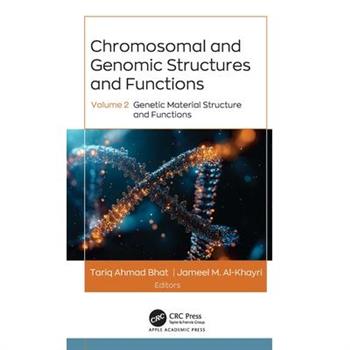





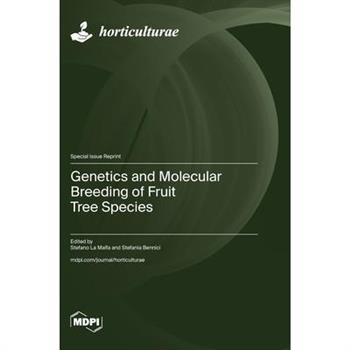


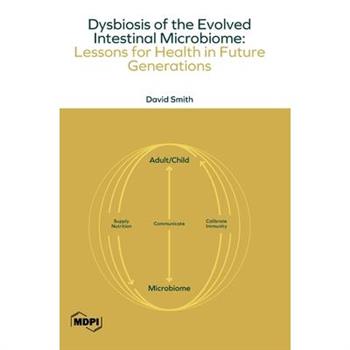
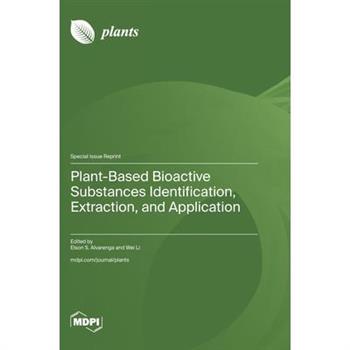





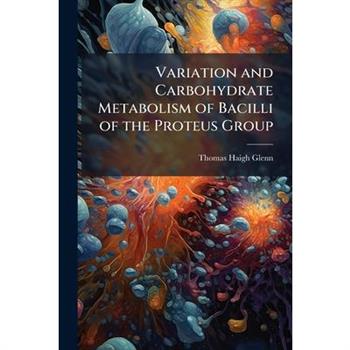


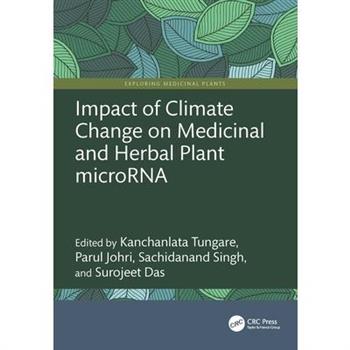
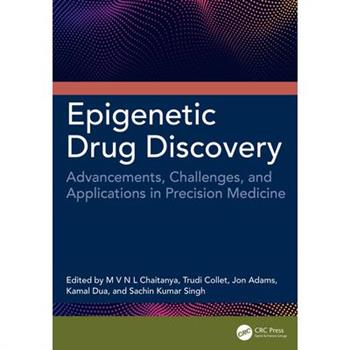

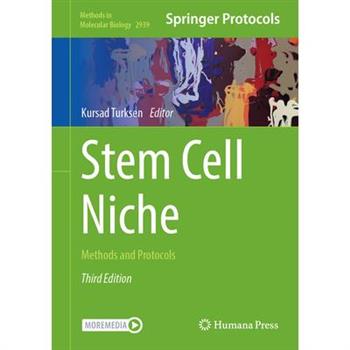
![Paracelsus the Treasure of Treasures Alchemists [Sc] Paracelsus the Treasure of Treasures Alchemists [Sc]](https://cdn.kingstone.com.tw/english/images/product/8041/9781312358041m.jpg?Q=c0298)
![Paracelsis the Treasure of Treasures Alchemists [Hc] Paracelsis the Treasure of Treasures Alchemists [Hc]](https://cdn.kingstone.com.tw/english/images/product/2349/9781312562349m.jpg?Q=ed734)







